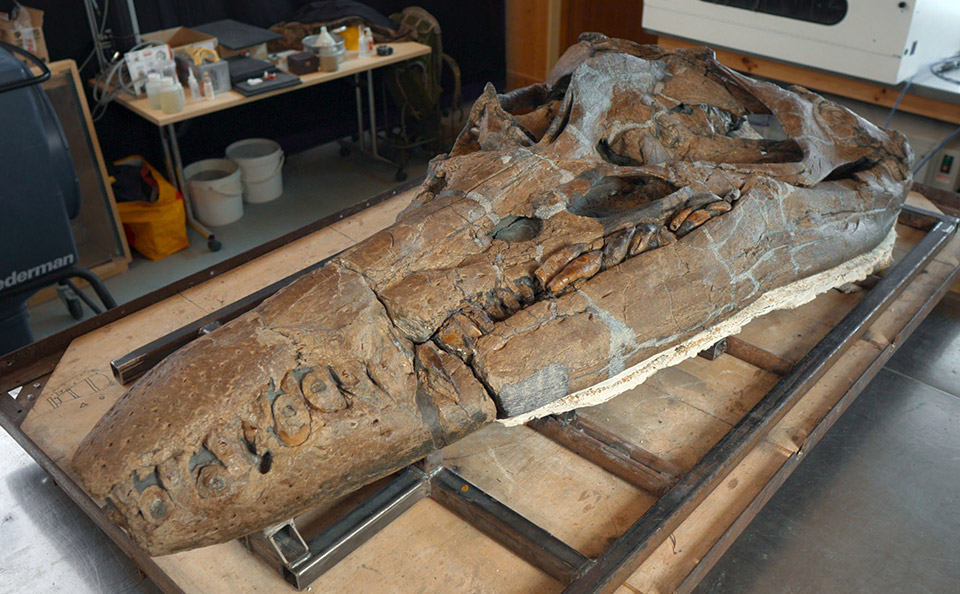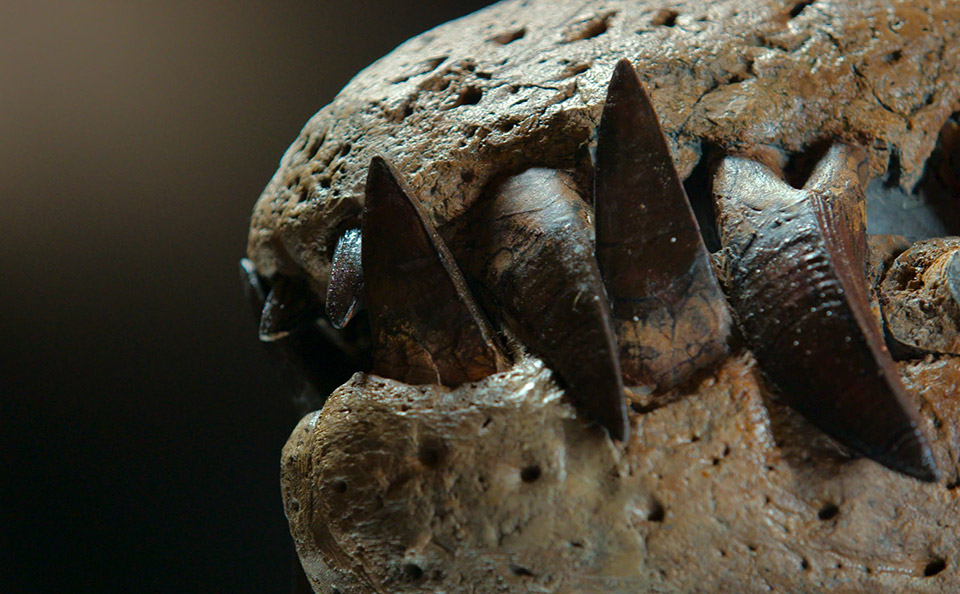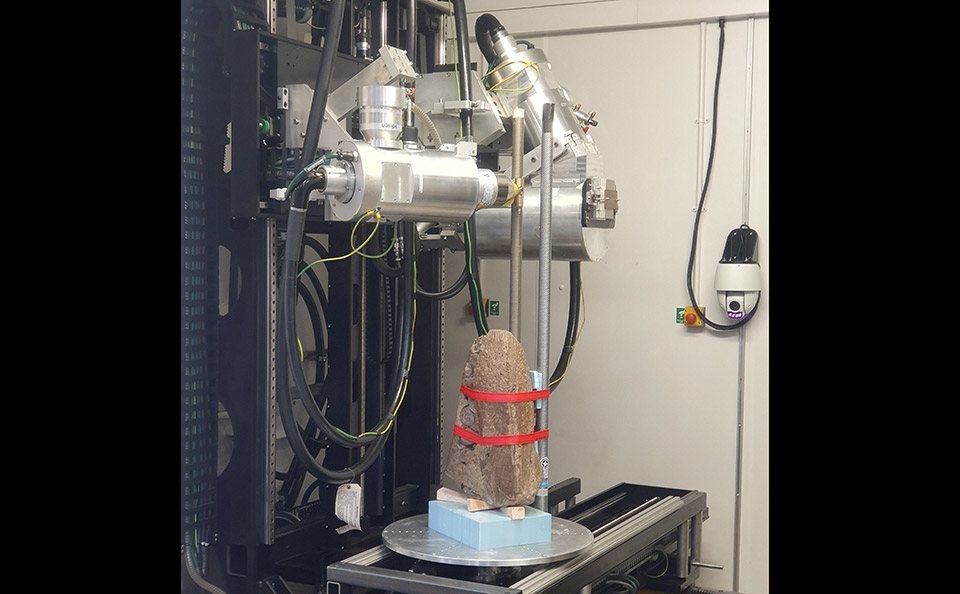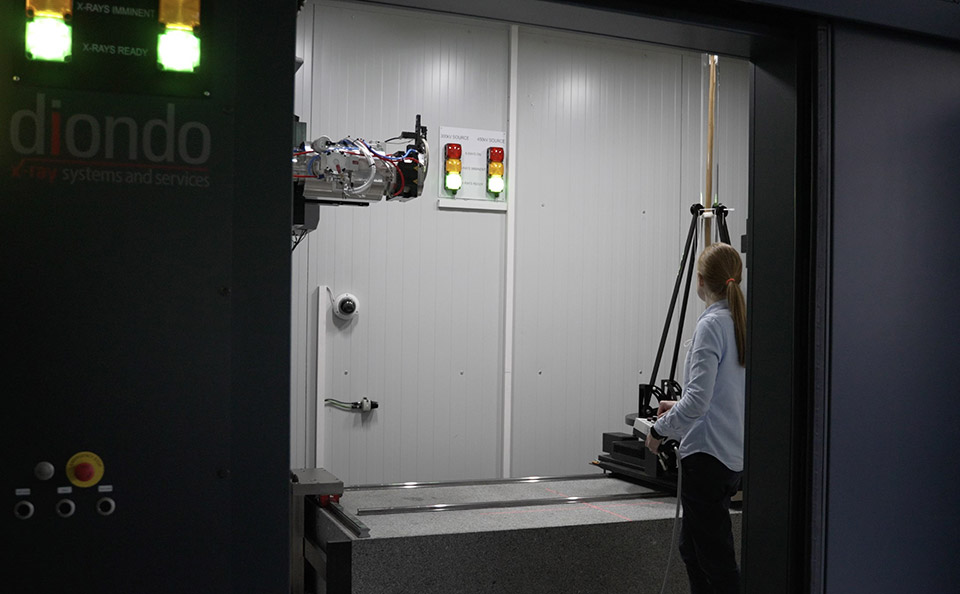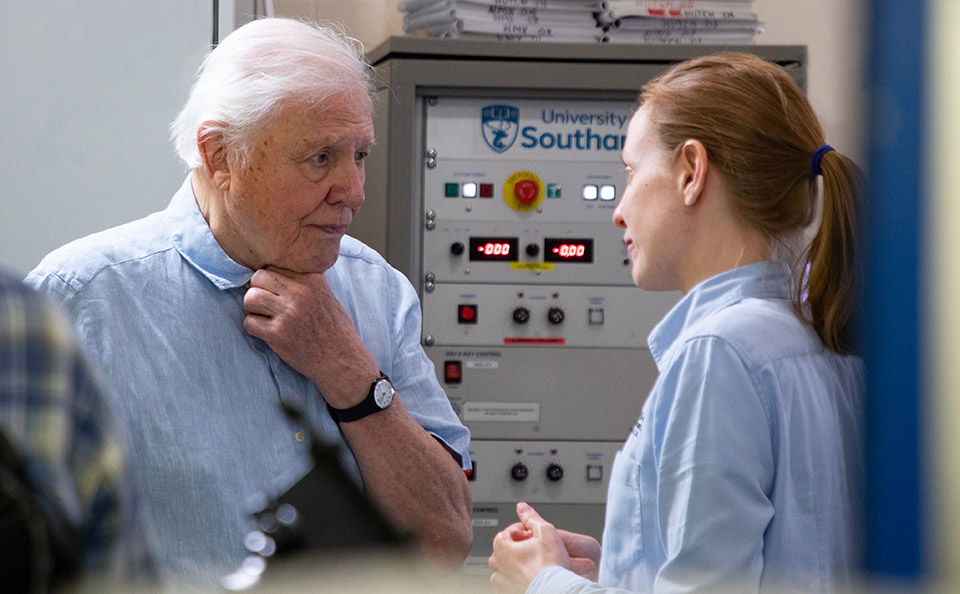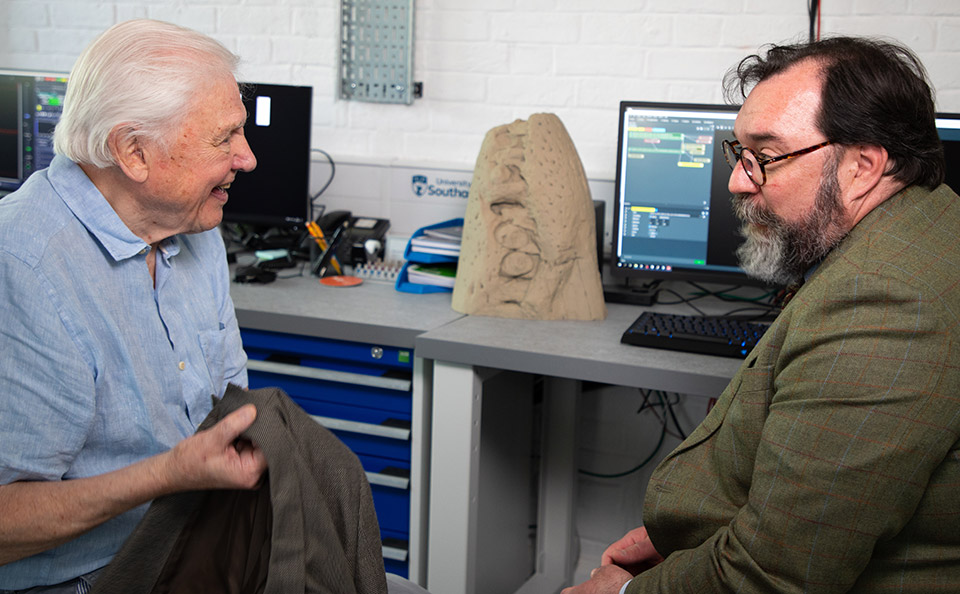Southampton features in prime time Sir David Attenborough documentary
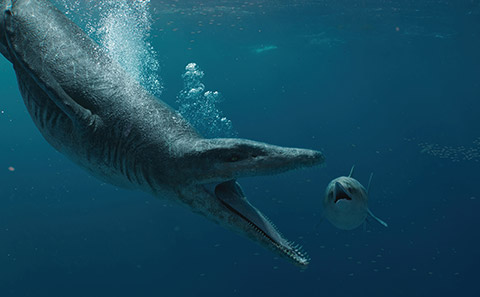
Researchers from the University of Southampton are set to appear in a new BBC Natural History programme revealing the secrets of a giant pliosaur, a ferocious predator which inhabited our seas at the same time as dinosaurs roamed the Earth about 150 million years ago.
The documentary, titled ‘Attenborough and the Giant Sea Monster’ (BBC One and iPlayer, 8pm, 1 January 2024), follows Sir David Attenborough on a journey of discovery as he explores the fascinating story of an enormous marine reptile whose skull was found buried on the Dorset coast near Kimmeridge Bay.
Sir David speaks to top scientists across the UK as he unlocks clues about the creature’s past – from understanding how it looked and behaved, to uncovering the strategies it used to hunt and kill its prey. His investigations lead him to the µ-VIS X-ray Imaging Centre at the University of Southampton, where scientists use their highly sophisticated scanning technology to investigate the snout section of the fossilised skull.
The µ-VIS equipment works in a similar way to a medical CAT scanner, but with greater power and at much higher resolution. The high-energy micro-focus scanner rotates samples through 360 degrees, taking thousands of 2D images, which are then used to build a detailed 3D virtual representation, with the ability to view inside the scanned object without harming it.
The University played host to Sir David and a BBC production crew in Spring of 2023. They filmed as the engineers virtually stripped back layers of fossilised material to reveal the pliosaur snout and its internal structures, such as the teeth and nervous system.
Dr Katy Rankin of µ-VIS and Associate Professor Dr Neil Gostling, a palaeobiologist at the University, were both interviewed by Sir David and feature in the documentary.
Dr Rankin commented: “It was an amazing experience. Sir David was really interested in what we do here and asked lots of questions about our facility.

“We have the two largest walk in high-energy micro-focus CT scanners in the UK university sector. This makes it possible to scan a wide range of specimen sizes and densities. Combined with over 20 years of X-ray CT experience, this put us in a unique position to help with this programme.”
Dr Gostling added: “Sir David Attenborough is an absolute inspiration and one of the reasons I became a palaeobiologist, so meeting him was hugely exciting for me. The filming was fantastic and it was great to have the rare opportunity to talk to Sir David one-to-one and share knowledge of pliosaurs with someone who has such a passion for them.”
Commenting on his investigations, Sir David Attenborough said: “Pliosaurs were the biggest and most formidable hunters in the Jurassic seas, the marine equivalent, you might say of T. Rex. The skull of this one is, by itself, over two metres long and armed with massive fangs.
“Frustratingly, skulls, which can tell us most about an animal, are only too easily smashed before fossilisation, but this one is virtually undamaged and promises to reveal all kinds of new details about these terrifying hunters that preyed on Lyme Regis’ better known ichthyosaurs.”
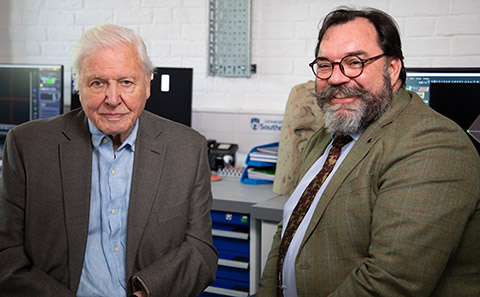
µ-VIS Director, Professor Ian Sinclair, said: “It was a great honour to host Sir David Attenborough at our Centre for what was a fantastic day of filming. µ-VIS works on a tremendous range of engineering projects - from medical tissue scaffolds, to novel batteries, railway tracks, wind turbines and space satellites. Undertaking the challenge of scanning this ancient pliosaur fossil, to help tell the story of a creature which lived 150 million years ago, has been an absolute thrill for our team.”
Attenborough and the Giant Sea Monster is the second BBC Natural History programme to feature the University’s µ-VIS X-ray Imaging Centre. In 2017, the Centre’s imaging capabilities virtually reconstructed the skeleton of a 200 million year old ichthyosaur for the documentary, Attenborough and the Sea Dragon.
Sir David Attenborough is an honorary graduate of the University of Southampton and received his degree at a ceremony in 1992.
